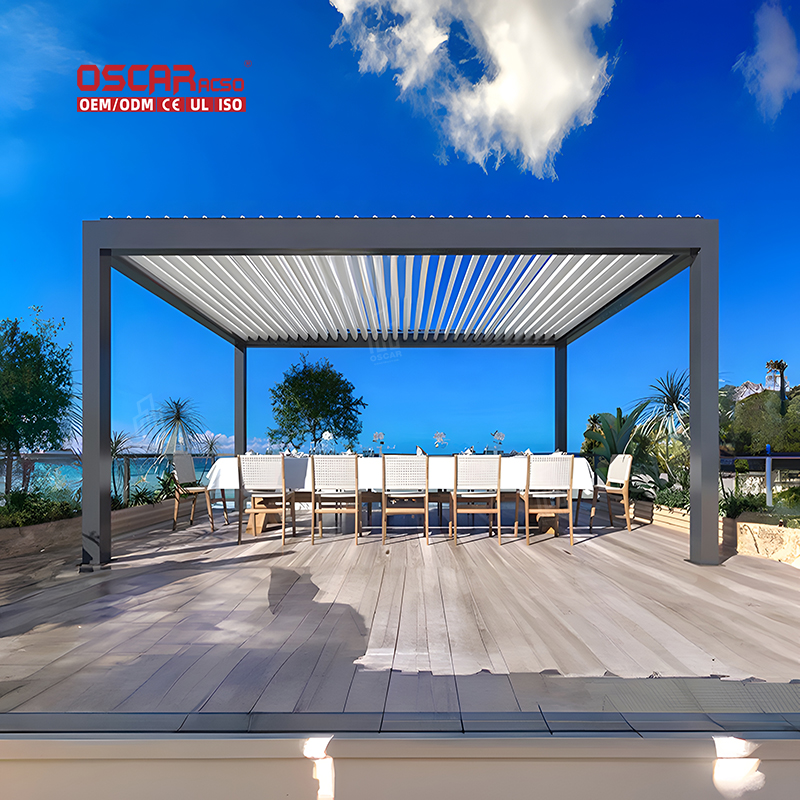Staining Secrets, Unlock the Perfect Timing for Your Pergola\’s Protection
Timing is everything when it comes to staining your pergola. Get it right, and you\'ll enjoy a beautiful, protected s...

Timing is everything when it comes to staining your pergola. Get it right, and you’ll enjoy a beautiful, protected structure for years. Get it wrong, and you might face peeling, uneven color, or poor adhesion. Let’s explore how to find that perfect window for your staining project.
🌤️ Why Timing Matters So Much
Staining your pergola isn’t just about aesthetics—it’s a crucial protective measure. The right timing ensures the stain penetrates deeply into the wood fibers, creating a barrier against moisture, UV rays, and temperature swings that can cause cracking, warping, and fading. Proper application in ideal conditions means your stain job will last longer and look better, ultimately saving you time and money on premature restaining.
📅 The Ideal Season for Staining
For most climates, the best seasons for staining are late spring and early fall. These periods typically offer the moderate temperatures and lower humidity that stains need to properly cure. During summer, intense heat can cause stains to dry too quickly, leading to uneven application. Winter cold, on the other hand, can prevent proper adhesion and curing. In hotter climates, using heat-resistant paint or stain is advisable for better durability .
🌡️ Perfect Weather Conditions
Keep a close eye on the forecast before you start your project. The sweet spot for staining is:
- •
Temperature: Between 10°C and 27°C (50°F and 80°F).
- •
Humidity: Low to moderate humidity levels.
- •
Precipitation: No rain predicted for at least 24-48 hours after application.
- •
Sunlight: Avoid staining in direct, harsh sunlight; overcast days or working in the shade during cooler parts of the day (early morning or late afternoon) is ideal .
Applying stain in direct sunlight can cause it to dry too quickly before it has properly penetrated the wood, leading to an uneven finish and reduced longevity.
⏳ The Right Time in Your Wood’s Life
The age and condition of your wood are just as important as the weather.
- •
New Pressure-Treated Wood: Wait 2-6 months after installation before staining. This allows the wood to dry out and the preservatives to settle. Staining too early can trap moisture and lead to problems .
- •
New Cedar or Redwood: These woods can often be stained a bit sooner than pressure-treated lumber, but it’s still wise to allow some time for drying .
- •
Previously Stained Wood: You’ll need to assess the condition of the old finish. If it’s peeling or flaking significantly, you’ll need to remove the old stain completely before applying a new one. If it’s in good condition, you may be able to clean it thoroughly and apply a new coat over it .
🔍 How to Know Your Pergola is Ready
Before you open that can of stain, make sure your pergola is truly prepared.
.jpg)
- •
Clean Surface: The wood must be free of dirt, dust, pollen, mildew, and old, flaking stain. A gentle wash with a mild soap and water solution is often sufficient. For tougher grime, a specialized wood cleaner or a very carefuluse of a low-setting pressure washer may be needed. Always let the wood dry completely after cleaning .

- •
Dry Wood: This is non-negotiable. Stain will not properly adhere to damp wood. After cleaning or a rain shower, allow at least 24-48 hours of sunny, dry weather for the wood to dry thoroughly.
- •
Sanded Surface: Lightly sanding the wood helps open up the pores for better stain absorption and creates a smooth surface for a more even finish .
⏱️ Drying and Curing Time
Your job isn’t done once the last brushstroke is applied. Drying and curing are critical.
- •
Drying Time: Most stains are dry to the touch within a few hours, but this can vary based on the product and weather.
.jpg)
- •
Curing Time: While it may be dry, the stain needs longer to fully cure and achieve its maximum durability. This can take anywhere from 24 hours to several days. During this time, keep pets and children away, and avoid placing furniture or decorations on or against the structure .
- •
Second Coats: If a second coat is desired or recommended by the manufacturer, ensure the first coat is completely dry before applying it.
❌ Common Timing Mistakes to Avoid
- •
Staining in Direct Sunlight: This leads to rapid, uneven drying.
- •
Staining When Rain is Imminent: Moisture will ruin the fresh finish.
- •
Staining Damp Wood: This prevents proper adhesion.
- •
Staining Too Early after Installation: Traps moisture in pressure-treated wood.
- •
Rushing the Process: Allow ample time for each step—cleaning, drying, staining, and curing.
🔄 How Often to Restain
A common question is, “How long will my stain job last?” Unfortunately, there’s no single answer. The recoating schedule depends on:
- •
Stain Type: Solid color stains offer the longest protection, typically 5-7 years. Semi-transparent stains usually last 2-3 years, while clear sealers may need renewal every 6 months .
- •
Climate: Harsh sun, heavy rain, and extreme temperatures will break down the stain faster. In areas with severe weather, you might need to restain more frequently.
- •
Wood Type and Exposure: A pergola in full, all-day sun will weather faster than one in a shaded area.
The best approach is to inspect your pergola annually. If water stops beading on the surface or the color has significantly faded, it’s likely time for a new coat .
Mastering the art of timing transforms staining from a routine chore into a strategic investment. It’s the secret to a pergola that doesn’t just survive the seasons, but continues to elevate your outdoor living space, year after glorious year.
.jpg)

